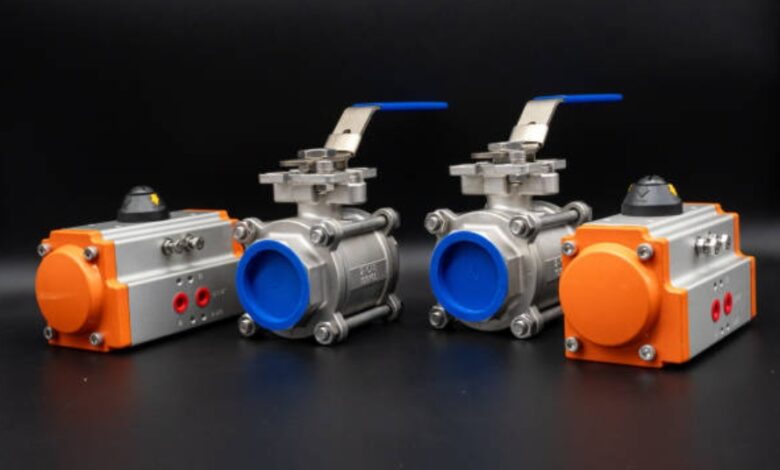The Impact of Electric Globe Valves on Energy Efficiency and Performance

As more industries shift towards smarter, environmentally friendly, and more effective operations, every element of a fluid control system is very important. Globally, electric globe valves are among the most impactful devices, especially to industries trying to achieve lower energy consumption and optimized performance at the same time. Considering their control characteristics, lightweight energy requirements, and full integration with automation systems, they are used in power plants, water treatment facilities, HVAC systems, chemical processing and many more.
Unlike pneumatic and hydraulic counterparts, electric globe valves employ electric actuators that adjust valve position based on set parameters with optimal precision. Their rise stems from a broader shift in industrial control systems focus towards energy efficiency, digitization, and system reliability. This article looks into the manner in which electric globe valves are managed in relation to an industry process performance and control valve implementation.
From Pneumatic to Electric: What Makes the Shift Worthwhile
Electric globe valves are control valves of the linear motion type, which regulate the flow by moving a plug to a certain position with the inlet port inside the valve body. Their structure provides excellent throttling capabilities, which make them preferable for various modulation applications like flow, pressure, or temperature control. Unlike pneumatic actuators, which need a constant supply of compressed air for operation, electric actuators function with motors that provide energy only when absolutely required.
That change alone enables significant savings in power expenditure. Estimates suggest that air compressors in pneumatic systems are in most cases the single most energy-consuming device in industrial plants. They operate without stopping, and leakage and drop in pressure is frequent and expensive. The globe valves in electric systems incur none of these wastages and therefore offer high precision and efficient energy use. They also cut down on obtrusive noise, maintenance, and even reduction of air infrastructure, which simplifies installation in many plants.
The control that can be exercised is another vital advantage. Electric actuators have the capability of making fine adjustments along with digital calibration and feedback which allows modulation of flow with precision. This is why they are preferred in applications that require high integration repeatability and PLCs SCADA systems or automated smart building networks. Pneumatic actuators are still useful in some emergency shutdown applications and do offer fast action. However, the globe control valve with pneumatic actuator and expert advice from a control valve company is now being considered for long term efficiency and performance when compared to electric alternatives.
In What Ways Do Electric Globe Valves Enhance Performance and Reliability?
Now, modern globe electric valves do more than open and close. Thanks to actuators that are digitally integrated, these valves provide real time feedback, programmable control, diagnostics, and process responsiveness, significantly reducing downtimes. From controlling the flow of chilled water in HVAC systems to regulating the steam pressure in power plants, electric globe valves ensure smooth and consistent modulation.
Advanced models feature torque monitoring, position verification, and local or remote override controls. These capabilities enhance the conduct of daily activities and aid in the implementation of maintenance programs. Predictive maintenance can easily be achieved with these systems. Engineers can track valve behavior and get stroke counts, actuation times, and resistance feedback, allowing maintenance to be scheduled before production bottlenecks occur.
Reliability stands out as an electric actuator strength. Factors such as lack of moving seals, compressed air components, and pressure differentials contribute to the lower lifetime service requirements observed in electric actuators compared to their pneumatic counterparts. In addition, sealed enclosures increase the lifespan of the system in dusty, wet, or corrosive environments where air driven systems have a higher risk of faster degradation. Furthermore, quieter operation improves contamination levels in cleanroom environments or sterile processing, where bypassing electric valves is more favorable.
Environmental Benefits and Energy Reduction
Electric globe valves, compared to their pneumatically controlled counterparts, are better at conserving energy since air compressors operate constantly, irrespective of the valve position. Active movement is the only time energy is consumed on electric actuated valves, which, when coupled with non-pneumatic systems, aids in reducing power consumption in electric actuated systems. The aforementioned factors significantly reduce energy waste and improve idle energy efficiency.
The sustainability aspect is equally as important. Quieter operations help energy efficiency compliance through LEED or ISO 50001 attainable. Commanding air pressure on actuators comes with the risk of a soft blow leak, which causes energy to go down the drain while remaining unnoticed. Cutting down on energy squandered helps ESG goals. It is also easier to attain sustainability milestones.
Electric actuators make ESG goals effortless to meet due to their cleaner functioning. Eaming goals such as reducing operational carbon footprints is also easy. Scope 1 emissions are significantly improved through smart electric globe valves. With a smarter valve, every motion is digitally traced which enables do-it-yourself energy reduction actions. Managers can modify system performance and resource allocation proactively and minimize downtime.
Working with manufacturing suppliers brings about rapid technological advancements for smarter electric control valves. Having manufacturing partnerships creates a collaborative environment geared towards eco-friendly industrial frameworks. Electric valves are becoming vital.
Working with experienced control valve companies offers control and automation customization. Customer requirements alongside edge computing can be catered by industrial grade AI. Fusing these technologies enables effortless self-governance accompanied with real-time data bringing about smart energy management.
Partnering with a Control Valve Company for Long-Term Value
A guide to tailored aid offered by the right control valve provider paired with the correct electric globe valve has no limits. With immense background in this sector, they unlock endless operational feats fostered by the right electric globe valve harnessing alliance. These include transforming flow rate, ensuring environmental and pressure calibration during automation.
A good valve supplier not only helps select the correct actuator type but also aids in system integration. They assist with pre-installation design by providing 3D prototypes, energy-saving estimates, and valve fitting tools to visualize workflows. Their guidance mitigates the frequent issue of inefficiencies and budget excess because of misallocated resources due to ambiguous scope statement definitions.
Additionally, globe valves are developed with electric and pneumatic modular adaptors by leading suppliers, allowing for quicker installation. These new designs protect investments by ensuring flexible alteration capabilities as system requirements change. Some designs offer hybrid systems and battery-powered backups for critical use operations.
Trusted partners aid in aligning control valve choices with operational strategies, helping improve energy targets, process performance, and strengthen infrastructure resiliency to enduring impacts. Investments protected by evolving system requirements help ensure flexible adaptations as the needs shift over time.
Summary
Electric globe valves mark the most recent advancement in the precision of controlling fluid movement through the system. They provide functionality in energy conservation, versatility in monitoring, and integration of advanced tech, along with reduced ownership cost. Industries are rapidly shifting to embrace smart, agile systems, despite remaining pneumatic valves.
Electric globe valves enhance operational efficiency and reliability by streamlining maintenance, reducing compressor loads, and integrating into automated control systems. When coupled with the expertise provided by a competent control valve company, your systems can realize the benefits of enhanced system performance, predictive maintenance, and measurable sustainability. For entities focusing on environmental compliance, developing efficiency strategies, and advanced controls, electric globe valves offer unmatched value.
Also Read: The Role of Type 3 SPD in Protecting Sensitive Office Equipment and IoT Devices





